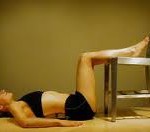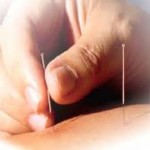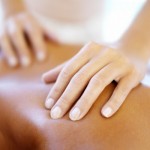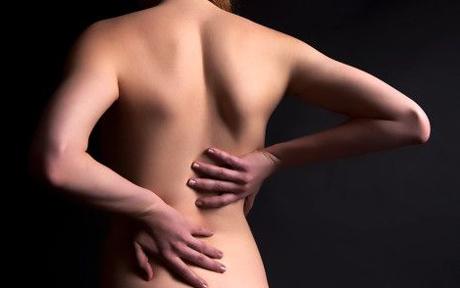Lumbar part of the body is commonly found in the abdominal part of the torso between the pelvis and diaphragm. The lumbar region is also known as lower spine or part of the lower back thus, the pain related to lumbar area is known as lumbar back pain.
Lumbar back pain is a common complaint by most people. In United States alone, it is expected that a great number people will have lumbar back pain at least once in their lives. It is also one of the most common reasons for missing work.
Lumbar back pain is prevalent because it carries most of the body weight and because of its flexible movement, it can suffer wear and tear over time. However, aside form the wear and tear, lumbar back pain can also be a symptom of another disorder that affects the surrounding area.
Normally, this can be painful and may limit movements however, this type of pain is manageable. With proper medications and lifestyle change, pain can be minimized and the patient may return to work normally.
What are the symptoms of lumbar back pain?
The symptoms of lumbar back pain may vary depending on the cause of the pain. Some of well-known symptoms of lumbar back pain may include:
- Pain in the lower back
- Dull or stabbing pain
- Tingling sensation
- Pain that radiates to legs
- Numbness
- Limited movements
- May not be comfortable standing straight
Lumbar backache may come and go for a few weeks. However, there are instances that lumbar back pain may need emergency treatment. Some severe symptoms that need emergency care may include:
- Weakness
- Numbness in legs
- Inability to control bowel movement
- Incontinence
What are the causes of lumbar back pain?
Lumbar region is an intricate structure thus pinpointing the exact cause can be challenging at times. Some of the common causes of lumbar back pain may include:
- The most common cause of lumbar back pain is lumbar strain. The strain that may affect the tendons, ligaments and muscles around the low back area may cause lumbar backache. Strain or muscle spasm can occur due to overuse or trauma to the lower back. The strain may affect anyone especially those who belongs to 40 years and above.
- Arthritis that affects the lower back may cause pain in the lumbar spine. The pain associated with arthritis is generally worse in the morning and may cause stiffness and limited movement.
- Herniated disk may compress the main nerve thus resulting to sciatica may also cause sharp and stabbing pain.
- Scoliosis, a medical condition where the body curves in one direction may also be the culprit of lumbar pain.
- Bone conditions that are congenital may affect the structure of the spine. Birth defect like Spina bifida, may not cause symptoms but it may cause pain in the lower back.
- Injury and bone fractures  may cause shooting pain from the lower back. This is normally observed to those who have accidents or trauma.
- Ruptured disks may damage the vertebrae found in the spine. Pain is felt when the ruptured disk bulges and press the nerve endings.
- Lumbar backache may also be observed by those who have symptoms of shingles. Mild to severe back pain can be felt before shingles appear.
What are the treatments for lumbar back pain?
Treatment for lumbar back pain varies depending on the cause of the pain. Some of the treatments for lumbar pain are:
1. Medications
 Medications are given to reduce the pain in the lower back. Part of the medication is minimize the pain and to lessen inflammation if any.
Medications are given to reduce the pain in the lower back. Part of the medication is minimize the pain and to lessen inflammation if any.
2. Lumbar exercise
 Regular lumbar exercise may help in strengthening the muscles  and increase movement. This will also help in addressing posture problems and lessen the severity of back pain.
Regular lumbar exercise may help in strengthening the muscles  and increase movement. This will also help in addressing posture problems and lessen the severity of back pain.
3. Acupuncture
 If the lumbar back pain is recurring, this may mean that the condition is chronic. Chronic backache may benefit well in acupuncture. Pain is minimized with regular use of acupuncture. However, ask first your physician if acupuncture is recommended to your condition.
If the lumbar back pain is recurring, this may mean that the condition is chronic. Chronic backache may benefit well in acupuncture. Pain is minimized with regular use of acupuncture. However, ask first your physician if acupuncture is recommended to your condition.
Â
Â
Â
4. Massage
 Massage is recommended especially if the cause of the lumbar back pain is lumbar strain. This may help in reducing the spasm and in relaxing the muscles.
Massage is recommended especially if the cause of the lumbar back pain is lumbar strain. This may help in reducing the spasm and in relaxing the muscles.
5. Maintain a healthy weight
 If you have problems in lumbar region, it is important that you maintain a healthy weight. Get rid of excessive pounds since it will add more pressure and pain to your spine if you are overweight.
If you have problems in lumbar region, it is important that you maintain a healthy weight. Get rid of excessive pounds since it will add more pressure and pain to your spine if you are overweight.
Â
6. Viniyoga
 Viniyoga is a type of yoga that promotes good posture and breathing exercises that may help in managing lower back problems
Viniyoga is a type of yoga that promotes good posture and breathing exercises that may help in managing lower back problems
Lumbar back pain is not really serious however, it can be bothersome especially if it is chronic. You may visit your physician to know the right treatment that will allow you minimize and manage lower back pain.
